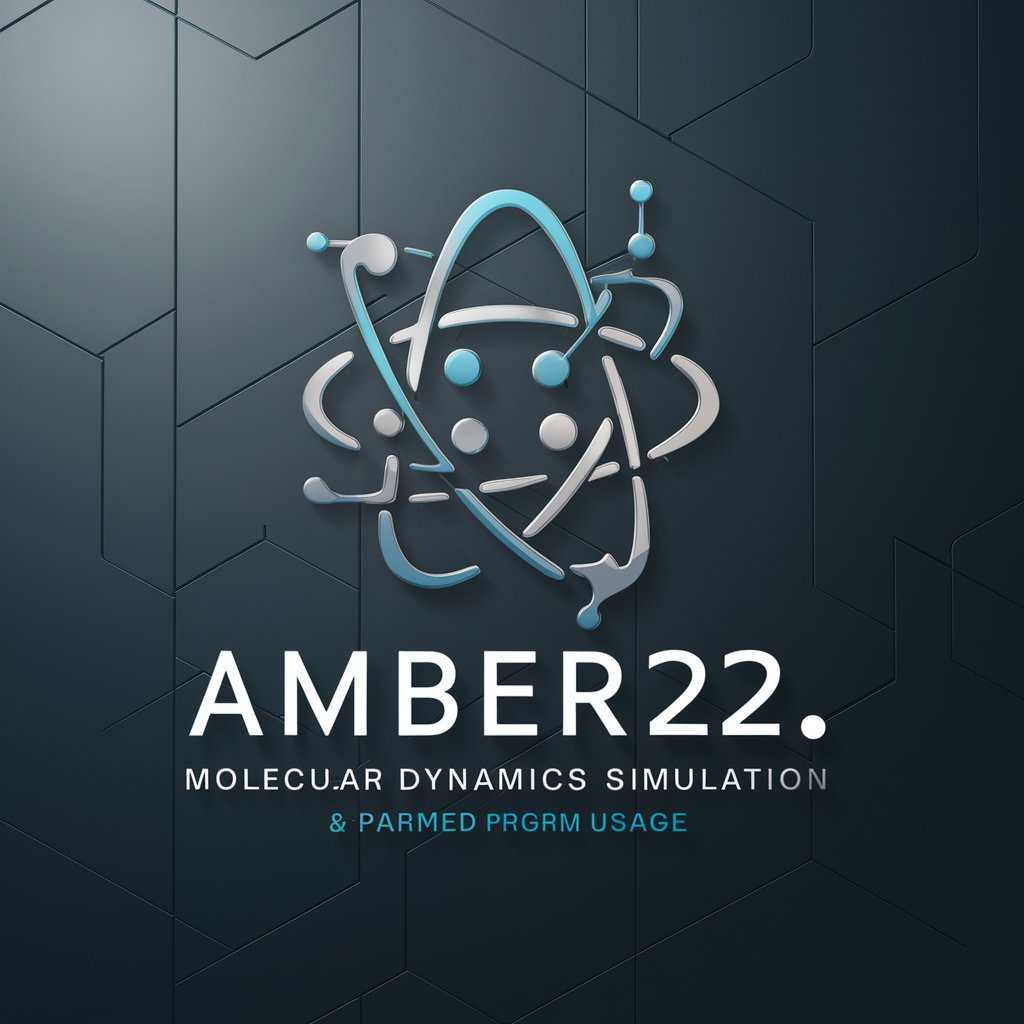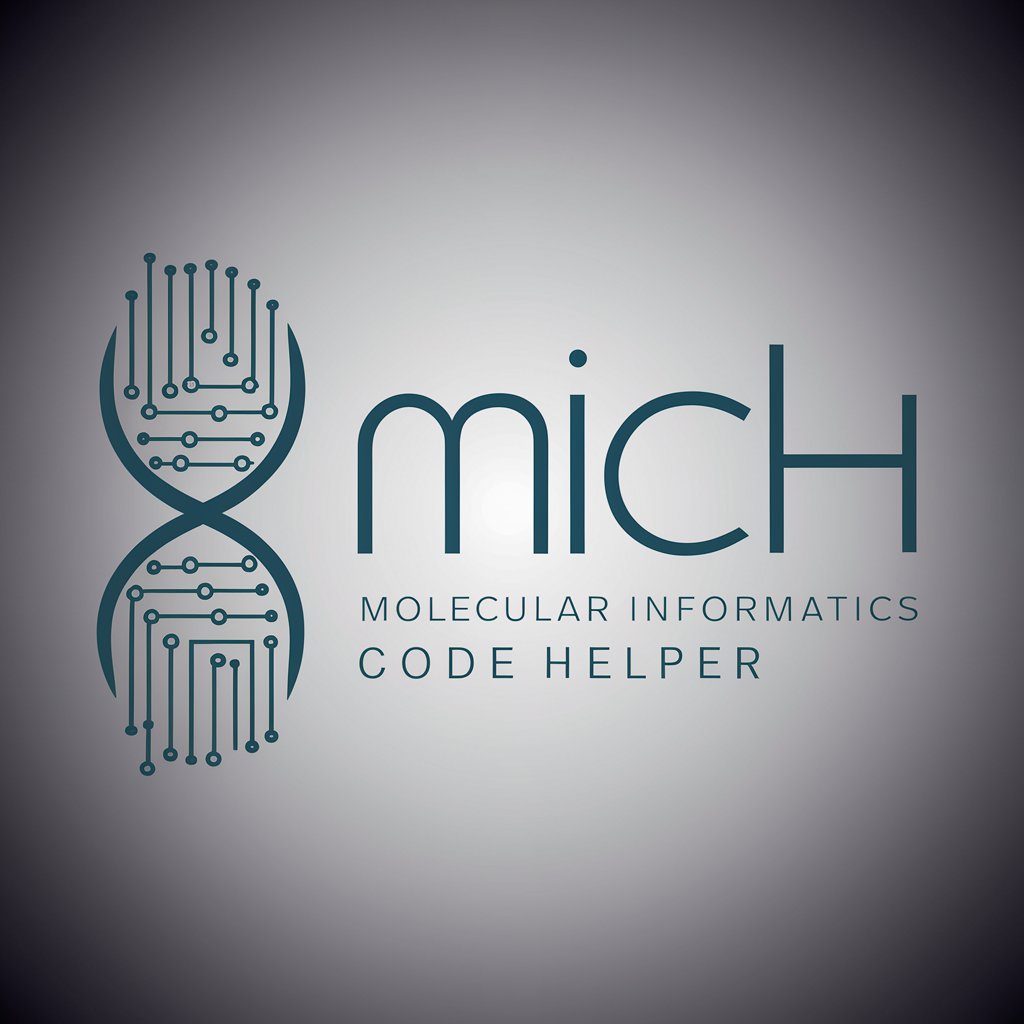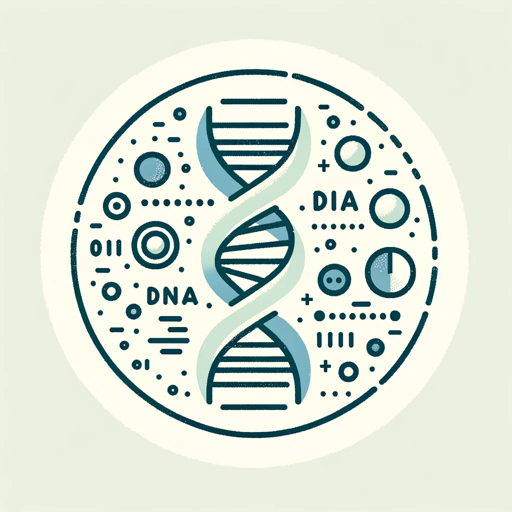
Docking and molecular dynamics - docking and dynamics tool for research.

Hi, I'm Docking, Dynamics, Data Analysis, and Visuals, your expert in molecular modeling and PDF reading.
AI-powered tool for molecular simulations.
How can I assist with molecular modeling today?
Need help analyzing a PDF?
What can I do for you in computational chemistry?
Do you have any questions about molecular dynamics simulations?
Get Embed Code
Introduction to Docking and Molecular Dynamics
Docking and molecular dynamics (MD) are two pivotal computational techniques in drug discovery and molecular modeling. **Docking** refers to the prediction of a ligand's preferred orientation when bound to a protein receptor, which allows scientists to estimate the binding affinity of potential drugs. This process involves searching for the optimal interaction between molecules, considering factors like shape complementarity and chemical interactions. For instance, AutoDock Vina is commonly used for protein-ligand docking. **Molecular Dynamics (MD)**, on the other hand, simulates the physical movements of atoms and molecules over time, providing detailed insights into the stability and conformational changes of biological systems. Tools like GROMACS and AMBER allow researchers to explore how biomolecules behave in different environments, aiding in predictions about stability, conformational dynamics, and potential binding sites. MD simulations also help evaluate the behavior of water molecules at protein-ligand interfaces, which is critical in understanding binding mechanisms. For example, MD simulations have been crucial in studies of water networks contributing to enthalpy/entropy compensation in protein-ligand binding, showing how water plays a crucial role in molecular recognition and drug design【18†source】【19†source】. Powered by ChatGPT-4o。

Main Functions of Docking and Molecular Dynamics
Ligand Binding and Affinity Prediction
Example
Using AutoDock Vina, researchers can predict how well a drug molecule fits into a protein's binding site, helping to evaluate its potential efficacy.
Scenario
In drug design, docking is used to screen large compound libraries, identifying those that bind strongly to the target protein, saving time and resources in experimental testing.
Simulating Protein-Ligand Complexes
Example
MD simulations using GROMACS can simulate how a protein-ligand complex behaves over time, revealing the stability of binding interactions.
Scenario
When a drug binds to a protein, MD simulations help researchers predict how this interaction might change under different physiological conditions, such as changes in temperature or pressure.
Analyzing Water Molecule Contributions
Example
The STOW package calculates the contribution of ordered water molecules at a protein-ligand interface to binding thermodynamics.
Scenario
Researchers use tools like WaterMap to study the energetic and entropic contributions of water networks at the binding interface, determining whether displacing or keeping water molecules improves ligand binding【19†source】.
Conformational Dynamics and Stability Analysis
Example
AMBER software simulates the dynamics of proteins, observing conformational changes that occur after ligand binding.
Scenario
In studies involving enzymes like Factor Xa, MD simulations reveal conformational changes upon ligand binding, helping optimize inhibitors for better efficacy【17†source】【18†source】.
Ideal Users of Docking and Molecular Dynamics
Pharmaceutical Researchers
Pharmaceutical companies use docking and MD to screen drug candidates, predict binding affinities, and understand the detailed mechanisms of drug action. Docking helps identify lead compounds, while MD provides insight into stability and interactions over time, which is essential for optimizing drug efficacy.
Structural Biologists
Structural biologists employ docking and MD to study protein-ligand interactions, structural flexibility, and water dynamics in protein complexes. These techniques allow them to visualize molecular behavior that is otherwise difficult to capture experimentally.
Bioinformatics Researchers
Bioinformaticians integrate docking and MD into computational pipelines to analyze large datasets of protein-ligand interactions, which helps in annotating protein functions and predicting drug targets at a large scale.
Academic Researchers in Molecular Simulation
Researchers focusing on fundamental biophysics and chemistry utilize MD to study thermodynamics and molecular interactions at an atomic level. This group benefits from the ability to simulate processes like protein folding, molecular recognition, and the effects of mutations on protein stability.

How to Use Docking and Molecular Dynamics
1
Visit yeschat.ai for a free trial without login, also no need for ChatGPT Plus.
2
Prepare your molecular structure using software like Chimera or PyMOL, and obtain the PDB or MOL2 format files for docking.
3
Choose a docking tool (e.g., AutoDock Vina, Glide) or a molecular dynamics suite (e.g., GROMACS, AMBER). Install these tools if needed.
4
Define the docking parameters, including grid box dimensions and energy scoring functions, or for dynamics, set up your system's topology and parameters (force fields, water models).
5
Run the docking or dynamics simulations and analyze the results using visualization tools or statistical metrics (RMSD, binding affinity).
Try other advanced and practical GPTs
Video Creator
AI-Powered Visual Storytelling Made Easy

TwoWings Weekly Report Assistant
Automate Your Team's Progress Reporting

Ramble to Prose
Refining Ideas with AI Power

Ramble
Unleash Creativity with AI-Powered Elaboration

Buyer Persona Gen
Crafting Your Audience, Personified

Soundstorm Explorer
Explore the rhythm of innovation.

Molecular Biology Advisor
AI-powered insights for molecular biology.

Manny: Meteorologist and funny weather guy
Brightening Your Forecast with Laughs

Funny stories
Unleash your imagination with AI-powered storytelling.

Animation Basics
Animating Creativity with AI

Java Builder Guide
Automate Java Builder Creation

Palm Reader
Discover Yourself with AI-Powered Palm Reading

FAQs on Docking and Molecular Dynamics
What is the difference between docking and molecular dynamics?
Docking predicts how small molecules bind to a receptor, estimating binding affinity, while molecular dynamics simulates the physical movements of atoms over time, revealing dynamic interactions in a system.
Which software is best for molecular docking?
Popular choices include AutoDock Vina for free, open-source usage, and Glide for highly accurate commercial docking, each having strong community support.
How do water molecules influence docking results?
Water molecules play a crucial role in the enthalpy-entropy compensation of binding, often bridging ligand-protein interactions and stabilizing the complex. Properly accounting for water improves docking accuracy【18†source】.
Can I combine docking and molecular dynamics?
Yes, docking can generate initial binding poses, which can then be refined using molecular dynamics to account for flexibility and environmental factors, giving a more realistic interaction model.
What are the common challenges in molecular dynamics?
Setting up the system, choosing appropriate force fields, and ensuring adequate simulation time for meaningful results are common challenges. Also, computational cost and result interpretation can be demanding.





